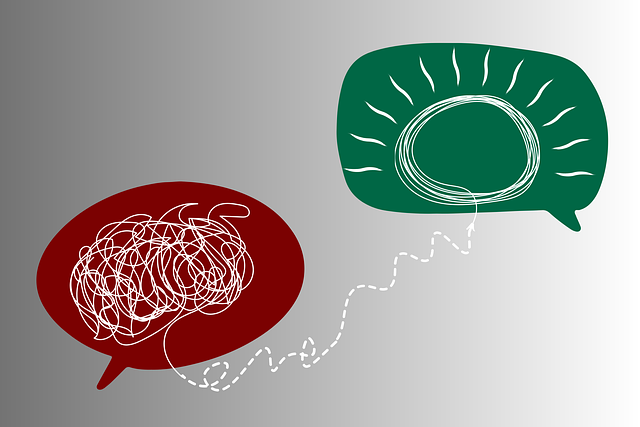Superior Interpersonal Issues Therapy (SIIT) prioritizes harm minimization through dynamic risk assessment, addressing complex interpersonal dynamics, emotional triggers, and underlying mental health conditions. This process involves comprehensive stress management workshops, mindfulness meditation techniques, and continuous protocol updates to foster resilience and client well-being. By combining education, tailored interventions, and proactive tools, SIIT empowers individuals to independently manage risks, enhancing overall mental wellness.
In the realm of Superior Interpersonal Issues Therapy (SIIT), risk assessment and harm minimization planning are paramount for ensuring client safety and effective treatment. This article delves into a structured approach, beginning with understanding the foundational principles of risk assessment. We explore identifying potential hazards unique to SIIT settings and developing robust strategies for harm minimization. Furthermore, we discuss implementation and continuous review processes, emphasizing the importance of dynamic adaptation for optimal client outcomes.
- Understanding Risk Assessment: A Foundation for Harm Minimization
- Identifying Potential Hazards in Interpersonal Therapy
- Developing a Comprehensive Harm Minimization Plan
- Implementation and Continuous Review: Ensuring Client Safety and Well-being
Understanding Risk Assessment: A Foundation for Harm Minimization

Risk assessment is a cornerstone of effective harm minimization planning, especially within the context of mental health and crisis intervention. It involves meticulously evaluating potential hazards and their likelihood to cause harm, enabling professionals to implement tailored strategies for prevention and mitigation. This process is crucial in Superior Interpersonal Issues Therapy (SIIT), where therapists aim to enhance clients’ coping mechanisms and resilience. By identifying risk factors, therapists can offer targeted interventions, ensuring the safety and well-being of individuals navigating complex interpersonal issues.
The foundation of a robust harm minimization plan lies in thorough risk assessment, which incorporates Crisis Intervention Guidance. This guidance ensures that practitioners are equipped with the knowledge and skills to respond promptly and effectively during times of crisis. Moreover, by fostering inner strength development through mental health education programs design, individuals can gain the resilience needed to manage risks independently. Such programs empower clients, enabling them to make informed decisions, recognize early warning signs, and access support systems, ultimately reducing the need for external intervention.
Identifying Potential Hazards in Interpersonal Therapy

In the realm of Superior Interpersonal Issues Therapy (SIIT), identifying potential hazards is a meticulous process that forms the bedrock of effective harm minimization planning. Therapists must navigate the intricate landscape of human interactions, where emotions and past experiences can create complex challenges. By carefully assessing each client’s unique circumstances, they can uncover hidden risks that may hinder progress. These hazards could manifest as intense emotional triggers, unhealthy coping mechanisms, or underlying mental health conditions, all of which demand specialized attention.
One crucial aspect involves recognizing the impact of interpersonal dynamics on a client’s well-being. SIIT aims to foster healthier relationships and communication patterns, but it’s essential to anticipate potential setbacks. For instance, clients might struggle with implementing stress reduction methods or resilience-building techniques learned during therapy in their day-to-day lives. Moreover, past traumatic experiences could resurface, requiring therapists to be adept at managing these repressed memories while organizing Stress Management Workshops within the organization to empower clients with practical tools for harm minimization.
Developing a Comprehensive Harm Minimization Plan

Developing a Comprehensive Harm Minimization Plan involves a strategic approach to address potential risks and promote mental wellness. It begins with identifying all possible hazards within an individual’s life, including those related to Superior Interpersonal Issues Therapy. This process requires a thorough assessment of personal, social, and environmental factors that could contribute to harm. Through this lens, individuals can better understand the intricate web of stressors and triggers that may arise.
A robust plan then translates these insights into actionable steps. It incorporates evidence-based strategies such as Mindfulness Meditation from our Mental Wellness Podcast Series Production and Stress Management Workshops Organization. By integrating these practices, individuals gain tools to navigate challenging situations, fostering resilience and enhancing overall mental wellness. This proactive approach ensures that individuals are equipped to minimize harm’s impact and cultivate a healthier, more balanced life.
Implementation and Continuous Review: Ensuring Client Safety and Well-being

Implementing a robust risk assessment and harm minimization plan is an ongoing process that demands constant vigilance. In the context of Superior Interpersonal Issues Therapy (SIIT), ensuring client safety and well-being involves integrating strategies that address potential risks specific to this therapeutic approach. This may include factors like complex interpersonal dynamics, sensitive personal disclosures, or cultural nuances. Regularly reviewing and updating risk assessment protocols is crucial to adapt to the evolving needs of clients and stay abreast of best practices in mental healthcare.
Cultural sensitivity in mental healthcare practice plays a vital role in mitigating risks and fostering positive outcomes. Therapeuts should incorporate mindfulness meditation techniques to enhance client awareness, resilience, and coping mechanisms. By promoting positive thinking and encouraging open dialogue, therapists can create a safe space that encourages self-reflection and personal growth while minimizing potential harms associated with SIIT. Continuous review of these measures ensures that the therapy remains effective and supportive for all clients.
Risk assessment and harm minimization planning are essential components of delivering effective Superior Interpersonal Issues Therapy. By understanding the foundational principles of risk assessment, identifying potential hazards, developing comprehensive strategies, and implementing continuous review, therapists can ensure client safety and well-being. This proactive approach not only protects clients but also enhances the therapeutic process, fostering a secure environment for growth and healing.













